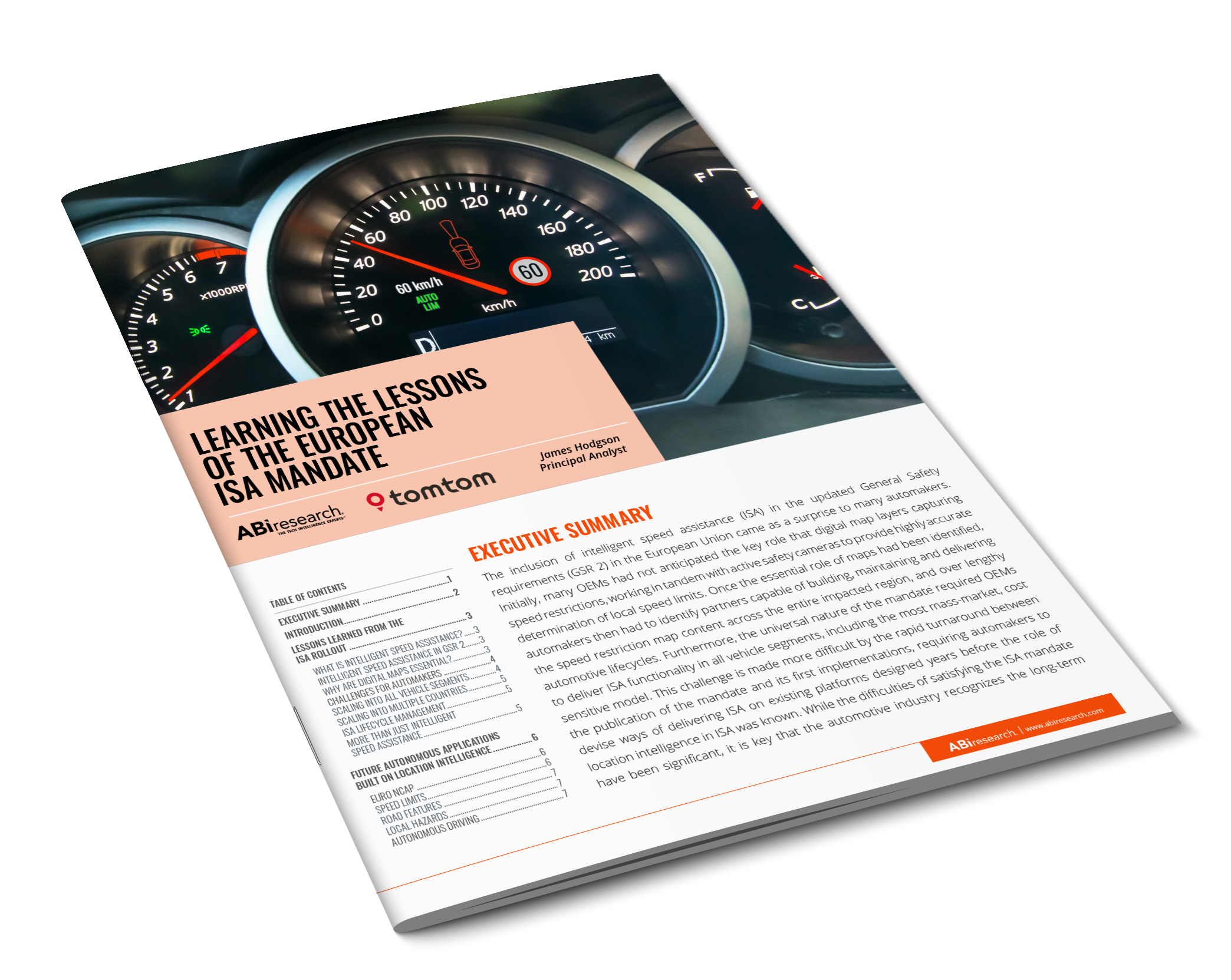Sponsored by ![]()
An important catalyst in this transformation of the role of automotive digital maps is the Intelligent Speed Assistance (ISA) system—one of a number of active safety systems included in the updated GSR 2, which sets the minimum threshold for safety technologies equipped in new vehicles shipping in the EU. ISA is set to jump from a niche technology to full penetration of new vehicles sold in Europe by mid-2024.
Therefore, automotive OEMs have been on a steep learning curve, learning important lessons about sourcing and scaling the fundamental technologies of a system that can accurately identify local speed restrictions on a variety of road types, in multiple countries, and in a wide range of scenarios.
Despite what automakers consider some frustration around a rapid turnaround between approval and implementation, ISA maps should not be treated as an inconvenient one-off. Rather, the automotive industry must recognize that digital maps and location intelligence will be a core technology for many future applications, ranging from Euro NCAP-assessed ADAS to Electric Vehicle
(EV) range extension and highly automated driving. Therefore, automakers must select location intelligence partners with great care, opting for a platform capable of meeting the immediate ISA requirement, while also ensuring that it can scale to meet the wide range of location intelligence needs of future applications.
Download the whitepaper to learn more.

